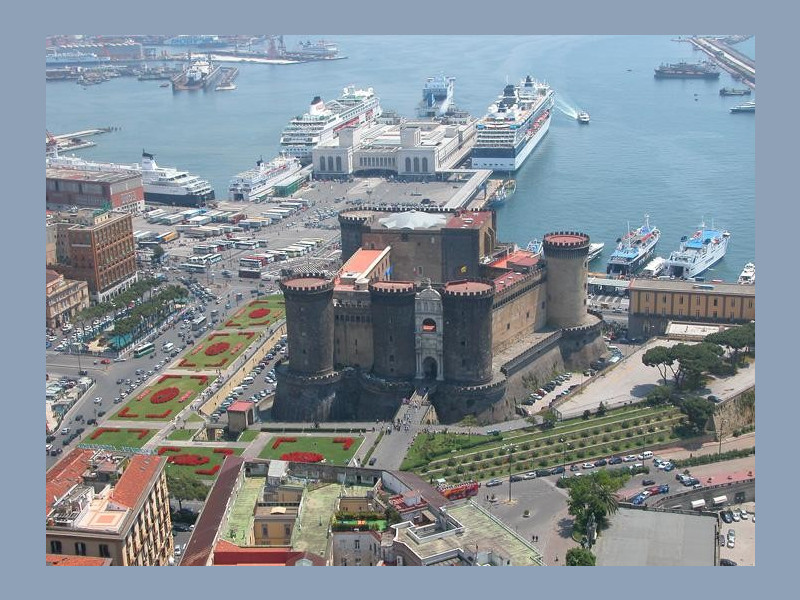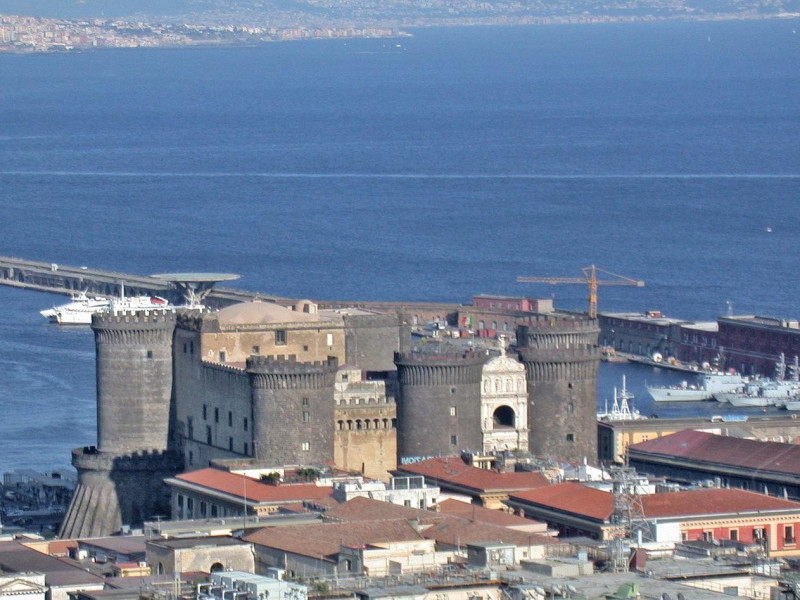Maschio Angioino (o Castel Nuovo)
The Angevin Castle (or New Castel) is one of the landmark buildings of Naples. The Castle is located in the Town Hall Square and is home of the Neapolitan Society of National History and the Committee of Naples Institute for the History of the Italian Risorgimento. Its construction is due to Charles I of Anjou, who decreed the transfer of the capital of the Kingdom from Palermo to Naples, constituting an urban pole around the harbor and the other two castles (Castel Capuano and Castel dell'Ovo) and establishing here his residence. The work began in 1279, by the architect Pierre de Chaulnes, and ended just three years later. From the Angevin period survives only the "Palatine Chapel": the facade of the inner courtyard has a Renaissance portal with reliefs; the interior retains a small part of the original frescoes by Giotto ("Stories from the Old and New Testament") and most of those in the fourteenth century, as well as valuable sculptures of the Neapolitan Renaissance (like the "Tabernacle of the Madonna and Child", by Domenico Gagini; and the "Madonna Enthroned with Child", by Francesco Laurana). The Anjou were responsible for the main hall of the castle, "Throne Room" (or "Maior Room"). Between the thirteenth and fourteenth centuries, the Castle was home to important historical events (abdication of Pope Celestine V, 1294) and cultural figures (Giotto, Boccaccio, Petrarch). In 1443 the fortress was completely rebuilt in its present form under Alfonso of Aragon, who entrusted the renovation in Gothic-Catalan style by Guillem Sagrera: five round towers (four in piperno and one in tuff) crowned with battlements and corbels, suitable sustain the blows of the guns, reiterated the defensive role of the Castle together with large bases in the escarpment along the moat; the triumphal arch in marble at the entrance, a masterpiece of Naples Renaissance by Francesco Laurana, stressed the importance of the palace as a center of power. The "Throne Room" was remade (with octagonal vault, windows guard and stages for musicians) and took the name of "Barons Hall". Subsequent works occurred under the Bourbons, with the addition of the Arsenal artillery. In the early 20s, it was built a long stretch of flowerbeds and external pedestrian insulation. The Castle also includes: the "Chapel of the Souls of Purgatory", dating back to the sixteenth century, with baroque decoration and paintings of great value; the "Chapel of St. Francis of Paola", fifteenth century, and the Prisons, "Crocodile Pite" and "Barons Prisons". The Angevin Castle offers a museum tour through the halls to admire the art collections ranging from the fifteenth to the twentieth century (including the masterpieces of Caravaggists Francesco Solimena and Mattia Preti), and houses the Library of the Neapolitan Society of National History.



